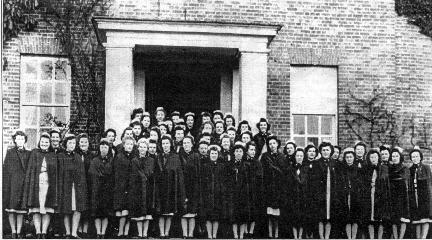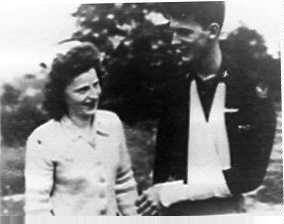Women at War
Through out history women were left at home to fend for themselves as their men marched off to war. They could expect little, if any, help from the state or their embattled husbands. Those who could not fall back on family for support were required to take on menial jobs such as laundress or seamstress to make ends meet, all the while taking care of any children she might have. It was a time of privation and sacrifice, and things didn't always improve as their men folk returned, if they returned at all.
Some women weren't satisfied with the passive role society imposed upon them, and they took up arms against the foes of their countries. Most notable among these women are Jeanne d'Arc of France (Hundred Years War) and Mary Hays McCauly (AKA Molly Pitcher). For her efforts Jeanne d'Arc would become the patron saint of France, while GEN Washington made Mary a Sergeant in the Continental army. Women would also continue to serve their country on the battle field and off during the American Civil War. It is estimated that 400 women disguised themselves as men and fought bravely alongside their unsuspecting brothers. Still other women chose more traditional roles and served in the Sanitation Commission or as nurses on the battle field. One of these angels of mercy, Clara Barton, would found the American Red Cross in 1881.

These ladies photographed above are the nursing staff of the 136th Station Hospital, Sudbury, England, photographed in front of Acton Place manor, which housed some senior staff members. The hospital structures were on the grounds and composed of Nissan huts for the wounded, and manor outbuildings for the bulk of the hospital staff. The woman sixth from left is 1st LT F. Evangeline Blauvelt, RN, WAAF. CAPT Helen Thomas, Chief Nurse, WAAF, is twelfth from right. Photographed provided by Roland Andrews and reprinted from O & W Newsletter Fall 98 issue.
When the United States entered the war in 1941 it was mobilizing the largest, and most mechanized, armed forces the world had known up to that time. The war was being fought on two fronts and the nation's men were drafted to meet the demand for troops. The mobilization of such a large armed force depleted the work force at home. At the same time a large work force was needed to build the airplanes, tanks and ships needed to win the war. Again, women answered the call and went to work in the shipyards, motor plants and aircraft factories. They became known as "Rosie the Riveter" and demonstrated skill and dedication equal to the men they filled in for. They helped America achieve the highest level of industrial productivity the nation has ever known before or since. No longer did women have to wait idly or worry about making ends meet during times of war. Their new jobs gave them freedom from these worries, and gave them a sense of fulfillment knowing they were helping win a war.

"Rosie the Riveter"
And once again women went to war with the men. This time they served in the Women's Auxiliaries and were known as WAAF's (Army Air Force), WAC's (Army Corp), WAVE's (Navy) and WAM's (Marines). Their duties included nursing, and administrative posts, which freed men for service at the front. Other women would fly aircraft with the ferry service and as pilot instructors. The American Red Cross was also serving the military providing comfort and helping to build morale among the troops. Additionally, they were the tie to the serviceman's family back stateside and helped with family emergencies involving the service member.

Sudbury, England (44/45)
The thoughts of their mothers, wives or girl friends helped the men on the front get through the roughest situations, and recover from their wounds. Women don't have to wear a uniform or heft a rivet gun to serve their country; for they who sit and wait, also serve!
Aircraft | Crews | Letters | Places | Strike
Copyright © 1998-2024, 486th Bomb Group Association.